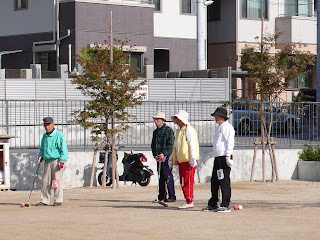
Through this class, I greatly changed my view of “Anthropology.”
My previous image of “Anthropology” is just like what this picture shows.
I had recognized anthropology to be one of the fields which study just the human evolution until I started to study in this class. How poor my understanding of anthropology was! However, through this class, I knew that anthropology is the study of not only the human evolution but also many other things such as cultures, society, and human behaviors.

If I am told to explain this picture (taken in Asakusa in Tokyo on Golden Week) anthropologically before I took this class, I must have explained as follows:
Humans are walking just with their legs and they are holding various things in their hands. Some people are holding bags in their hands and even there is a woman who is holding an umbrella in her hand. Humans have made great progress in functions of their bodies. I can’t see any image of monkeys in humans in this photo…….etc.
Now I don’t explain in that way. I would direct my attention to not only human itself but also other elements in this picture. I can explain it in terms of cultural elements such as temples or outside shops and also I can describe the relationship between people and those cultural elements.
Anthropology is a much bigger research field than I had expected. I think anthropology is a huge field that covers the whole human society. When I noticed the hugeness of anthropology, I nearly kept away from the study. However, while I had continued to get involved in this class and this blog as one of “native anthropologists,” I found that anthropology is very near to us. That’s because it is the study of ourselves, I think.
I feel that anthropology can be studied by any perspectives, in other words, I thought that anthropology is very free and flexible. Even I, a non-expert of anthropology, could be involved in the study of anthropology in this class by examining my experiences or surroundings. Materials for the study are here and there in the human society, that is, as long as the human society exists, anthropology never disappears.

 My father said that he comes up with the image of the right wing (右翼: uyoku) when he sees the flag. The cars of uyoku which are displaying Rising Sun Flag are sometimes found on streets. They go around by car, appealing the come back of the Emperor system. They are often playing Kimigayo in a loud volulme.
My father said that he comes up with the image of the right wing (右翼: uyoku) when he sees the flag. The cars of uyoku which are displaying Rising Sun Flag are sometimes found on streets. They go around by car, appealing the come back of the Emperor system. They are often playing Kimigayo in a loud volulme.



























